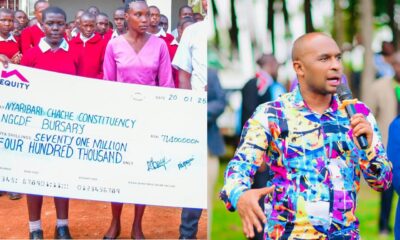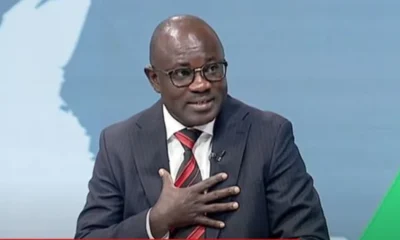On March 4, 2013, Kenya successfully conducted first general elections under a new Constitutional order having promulgated a new law in 2010. The conclusion of the poll ushered new leadership in a devolved system of government where power and resources are decentralized.
The first year of Kenya’s devolution journey under President Uhuru Kenyatta was characterized by intense bargaining between the two levels of government in the nascent decentralized structure.
Constitutionally, the county governments were to be disbursed at least 15% of the total national budget to run their programmes. But there was a push for more. The dominant conversation back then was how to get the National Treasury to channel more funds to the counties for development programmes. Amid this debate, the government went ahead to allocate 32% of the national revenue to the counties.
“This was a doubling of allocation in support of the execution of the devolved dream. And we did this because we understood and appreciated that devolution of functions without ‘devolution of funding’ was an exercise in futility.’ Said President Kenyatta
To further realize Kenya’s devolution aspirations, Uhuru’s government had the burden of ensuring devolved functions were transferred to the new administrative units. This was particularly important given that these functions would dictate the amount of funds to be disbursed to counties.
To its credit, Kenyatta’s government fast-tracked this process and soon the transfer of functions to counties was accelerated. This would be the agreeable avenue for counties to get more resources for development at the grassroots. This transfer was done in one year instead of the constitutional threshold of three years.
“We undertook a massive transfer of highly skilled civil servants from the national government to the county governments. This battery of highly trained personnel was meant to give the county governments a head start.” He said
According to the president, this skilled manpower immediately embarked on setting up the county public services, including their operating structures and systems. And he attributes this to the take off made by counties.
Sustainability
These efforts notwithstanding, counties are still struggling in their efforts to raise internally generated revenues with majority still dependent heavily on allocations from the National Government.
The head of state, however, holds the view that Kenya has made significant steps towards entrenching equality through the adoption of the appropriate law of the land. He believes that the 2010 Constitution had helped bring people closer to Government, enabled them to participate more directly in the development process and aligned Government response to local needs and aspirations.
“Equality is enshrined in the Constitution of Kenya 2010 which recognizes every person is equal before the law and has the right to equal protection and equal benefit of the law,” President Kenyatta said.”
According to President Kenyatta, his administration has been proactive in allocating more resources, especially to counties that still lag behind in development as part of its efforts to boost equality.
Throughout his tenure, he says he has given priority to strengthening the socio-economic fabric through expansion of education and health facilities as well as improvement of infrastructure across the country.
The head of state has lauded the progress made by Kenya in the implementation of devolved system of governance.
Big boost
In the beginning, President Kenyatta sais Counties needed political, administrative and financial autonomy to operate and so far says he is satisfied with what has been achieved under his leadership.
“I am happy to report that…my Administration has laid a sound foundation for the devolved system of government; a foundation that has the potential to multiply the economic fundamentals of our county economies immeasurably.” He said during the state of the nation address in Parliament last year.
He said the National Government has disbursed approximately Ksh. 2.44 Trillion to county governments over the last eight years. This amount, according to the President is almost equivalent to Kenya’s current national budget.
“In other words, for the last 8 years, we have percolated to the counties what the entire Republic operated with for a period of close to 39 years.’ He said.
President Kenyatta says the impact of this ‘percolation of resources’ has completely turned around the economic fundamentals at the county level.
He gave an example of Shoes and Mango factories in Kitui and Makueni counties respectively which have positively impacted locals at the grassroots economically.
He said devolution is taking root, and that this is as an affirmation of the equitable development the country now enjoys.
“Devolution was designed to meet Kenya’s deepest political needs for effective representation at the local level and fairness in the distribution of national resources. Indeed, the equitable distribution of resources is central to our achieving sustainable peace, unity and cohesion as a nation.” Uhuru Kenyatta during the governors summit at Sagana state lodge on 11th February, 2016
Devolution achievements and dividends a visible reality
Speaking during the official opening of the 7th annual devolution conference in Makueni County last year, the President noted that of all the programmes Kenya has implemented since independence to spur socio-economic development, devolution has had the deepest and most far-reaching impact on the lives of Kenyans.
“Indeed, today the devolution achievements and dividends are a visible reality in all parts of the country. Everywhere you go across the country, you find more empowered communities and note major improvements in infrastructural development, health care and basic services, as well as service delivery,” he said.
“In the last decade, we have come a long way on the devolution journey, but it remains work in progress. To deliver on the promise of devolution to Kenyans, we need to build on the successes to strengthen areas where progress has been slow,” he added.
The president highlighted two areas where stronger cooperation and coordination between the National and Country Governments could enable Kenya to reap the devolution divided faster and more effectively.
The first, he said, was to build on the solid public finance management legal framework Kenya has to ensure the distribution of resources between and within regions is more equitable; and to focus more sharply on getting better value for money.
The second was to work towards becoming a truly responsive government, by promoting and increasing accountability at all levels, and ensuring that citizens are actively engaged in decisions and actions, that impact on their lives.
Challenges
Devolution has faced various challenges including lack of a proper framework for intergovernmental planning, over reliance on the National Government and an unsustainable wage bill.
Also, allocations to County Governments have actually been reducing every year since 2013 and delayed disbursement of funds by the treasury is actually harming development of the Counties.
So Far, the National Treasury has disbursed more than Ksh 286 billion of equitable share allocation to counties this financial year, with the pending amount of Ksh 85 billion being fast-tracked for payment.
The future of devolution is dependent on the principle of consultation, coordination and cooperation and for the coming government to make sure that the two levels of government interact to ensure their individual outputs speak into enriching and enhancing the lives of Kenyans.
Related

 General News7 days ago
General News7 days ago
 General News3 days ago
General News3 days ago
 Politics3 days ago
Politics3 days ago
 General News1 day ago
General News1 day ago





